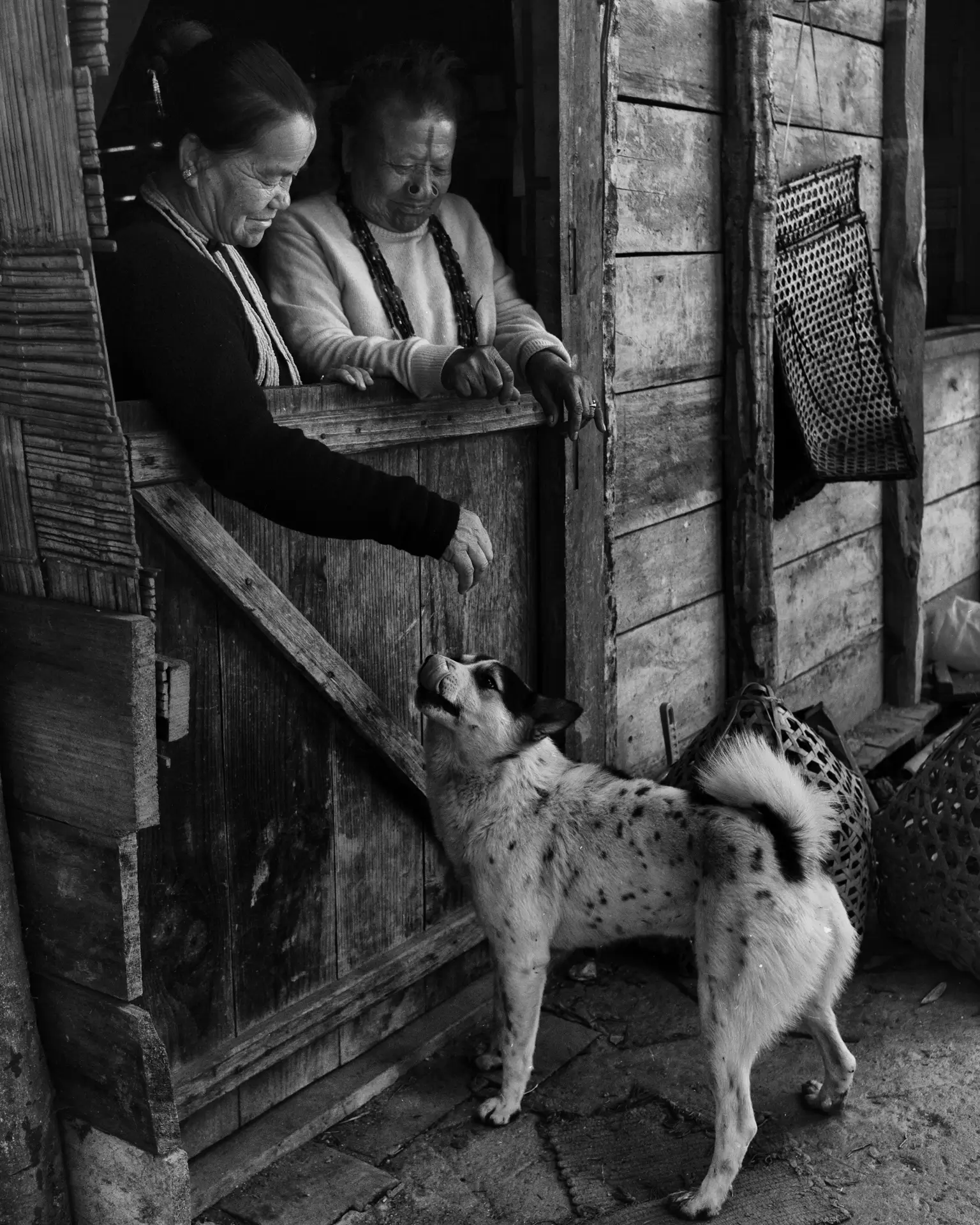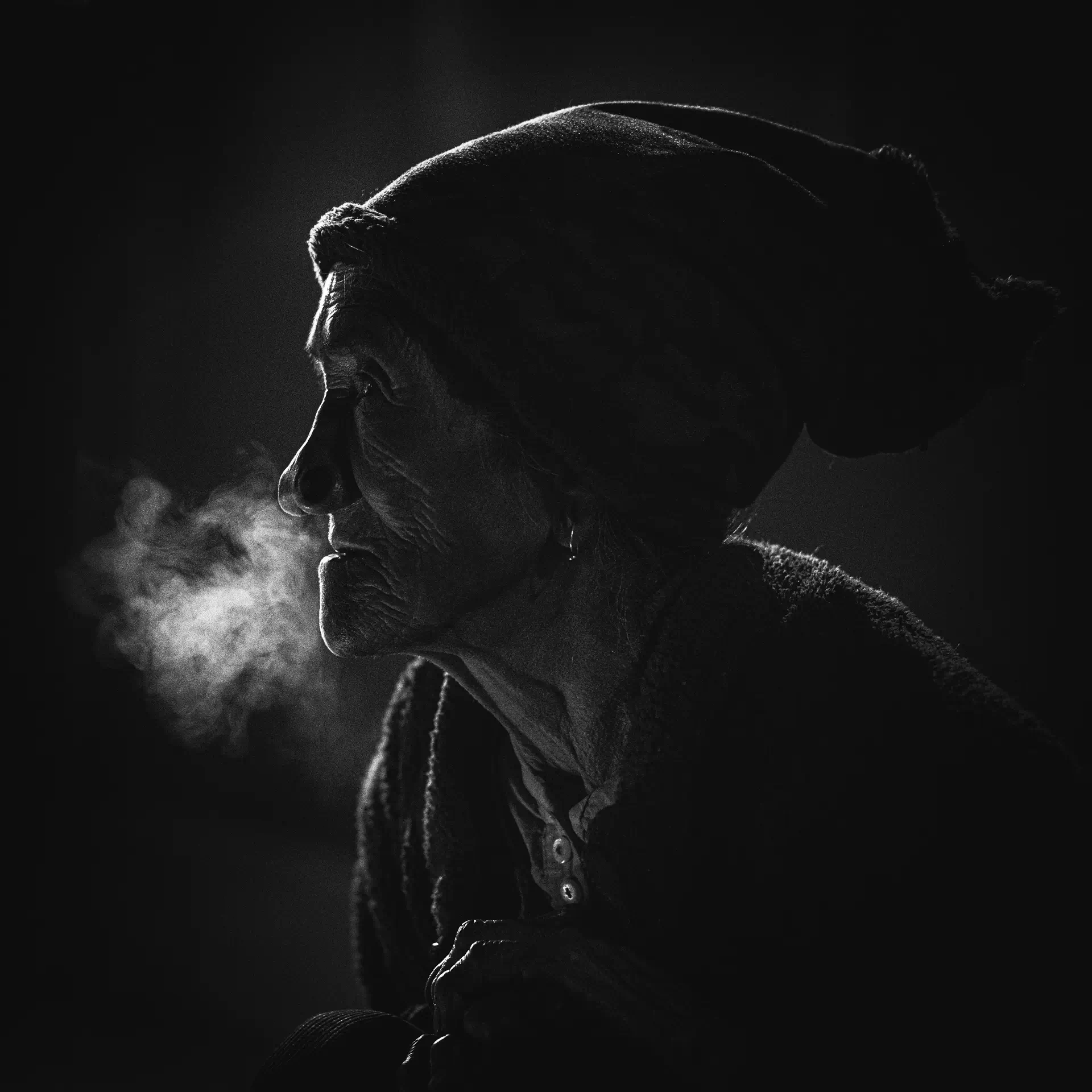Part 2 - Exploring Ziro Valley and stumbling upon a whole new world
- Samprathi Karthik
- Dec 8, 2024
- 4 min read
Updated: Jan 7

Apatani women: Pillars of the valley’s spirit
The women of the Apatani tribe left an indelible mark on me. They are the heart of the community, juggling household duties with farming and economic responsibilities. From tending to paddy fields to managing bamboo forests, their strength and resilience shine through. Despite the hard work, they do it all with quiet grace, inspiring me deeply.
The inked identity of Apatani women
The Apatani tribe of Arunachal Pradesh has a rich tradition of tattooing, primarily practiced by women. The tattoos, vertical lines running from forehead to chin, and the large nose plugs, were an unmistakable part of their identity. These tattoos were originally a form of protection, linked to two primary myths. One story claims that the Apatani women were so beautiful that they were frequently abducted by men from neighboring tribes, prompting the creation of the tattoo as a form of “uglification” to ward off such acts. Another myth suggests that after frequent tribal feuds, the spirits of dead men, unable to reconnect with their wives, began disturbing families. To protect themselves, the Shaman, the Apatani priest, advised women to tattoo their faces, making them unrecognizable to the spirits.
The tattoos, typically inscribed when a girl reached puberty, consisted of a thick line from the forehead to the nose and five lines on the chin. The ink was a mixture of pig fat and soot, and the tattoos were done using a needle made from thorns and a small hammer. The women also wore large nose-plugs made from local wood, which contributed to their distinct appearance.
Over time, what started as a protective measure evolved into a cultural symbol of beauty. An Apatani woman was considered incomplete without these tattoos and nose-plugs, which also symbolized fertility and prosperity. However, with the arrival of modernity, younger generations began to view the practice as an obstacle to integrating with the wider world, leading to the cessation of the tradition in the 1970s following a government ban. Today, tattoos are seen as an exotic cultural relic, highlighting the shifting dynamics of tradition in the face of change.
Meeting the women of Ziro

Staying at Narang Yamyang’s house in Hong basti was more than a cultural experience; it became a journey into the lives of the women who shape their community. Alongside Yamyang, whose routine reflected the Apatani way of life, I met other remarkable women whose stories offered inspiration and insight. Each moment spent with them revealed their strength, resourcefulness, and unwavering connection to the land. Here, I share the portraits and stories of a few women who left a lasting impact.
Hibu Yasing: An inspiration

During my stay in Hong basti, I had the privilege of meeting several remarkable women, but the one who left a greater impression on me was Hibu Yasing, popularly addressed as Ane. She is a respected elder in the community, a woman whose life story was as inspiring as it was humbling. Ane was one of the firsts in her village to ensure her son received education—a decision that would change his life forever. Her son went on to become the first IPS officer from Arunachal Pradesh, India, a source of immense pride for her and the entire village. His success became a beacon of hope for others in Hong basti, inspiring many to see education as the path to a brighter future. They later established a library and a health center in the village, resources that benefit everyone in the community. Her story is a reminder of the power one individual’s determination can have on their surroundings.
Despite her accomplishments, Ane remained deeply connected to her roots. In our conversations, she shared the delicate balance she had found between preserving her culture and embracing the opportunities education and modernization offered her family. I captured some photographs of both Ane and Yamyang, immortalizing the quiet strength that defined their lives in Ziro Valley.
The spirit of an 80-year-old matriarch
Another unforgettable experience during my stay was meeting an 80-year-old woman who lived alone. Her children had moved to the city, but she remained fiercely independent, managing everything from cooking and cleaning to tending her garden and paddy fields. Despite her age, she moved with remarkable ease, even in the freezing cold. While I was bundled up in layers, she wore only minimal clothing, relying on her own resilience to stay warm. Watching her, I was struck by her energy and determination—her life, a testament to the strength that comes from self-reliance and living in harmony with nature.
A life-changing experience

My journey to Ziro Valley wasn’t just about travel or cultural exploration—it became a transformative experience. The Apatani women, deeply connected to their land, showed me the essence of a meaningful life. Their routines were demanding but carried out with respect for the environment and a commitment to self-reliance. Witnessing their ability to balance household responsibilities, community contributions, and cultural traditions, I understood that sustainable living can coexist with preserving one’s heritage.
On my final day, Yamyang gave me a bamboo fork and spoon she had made herself. This thoughtful gesture felt like taking a piece of Ziro with me—a symbol of the strength and grace I had seen throughout my stay.
The Apatani women had taught me that true strength lies not in physical force but in the ability to persevere, adapt, and stay rooted. Their quiet power and sense of purpose were a reminder of the delicate balance between honoring tradition and embracing change. Their stories remain with me, a testament to the enduring spirit of their community and the timeless values of simplicity and connection.
Disclaimer: The views and opinions expressed in this article are personal and based on my experiences during the visit. They are not intended to represent or generalize the beliefs, traditions, or practices.













The ‘inked’ identity is so beautiful! Lovely write up and keep inspiring with your experiences Karthik ! 👍